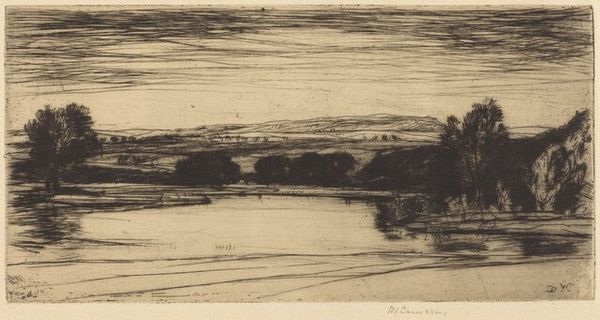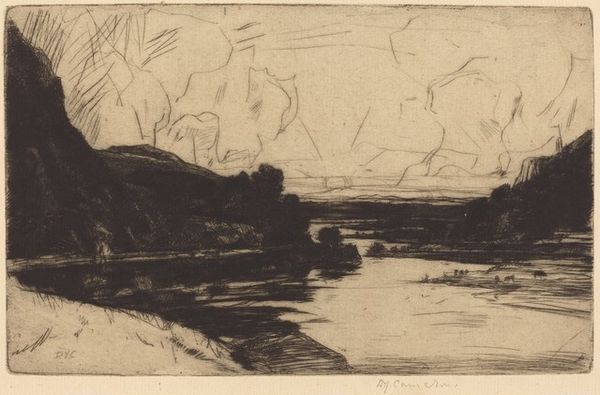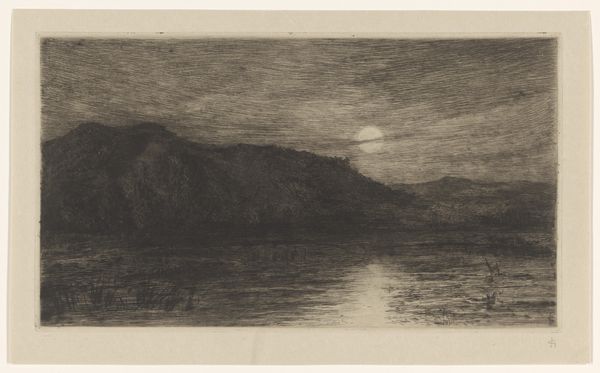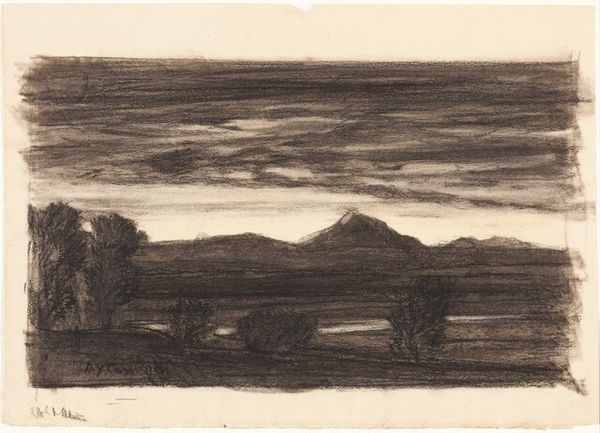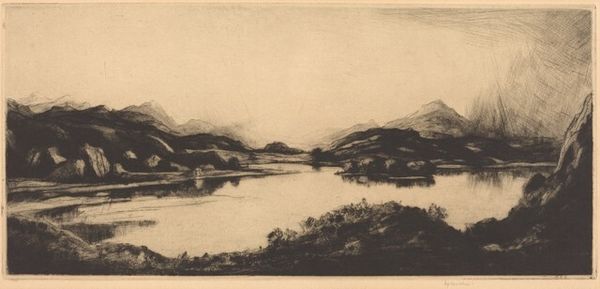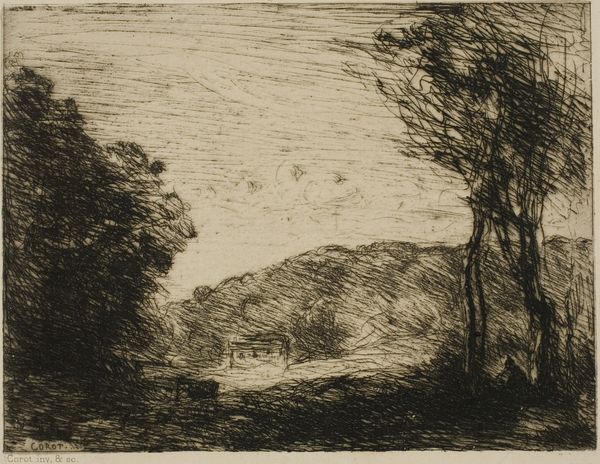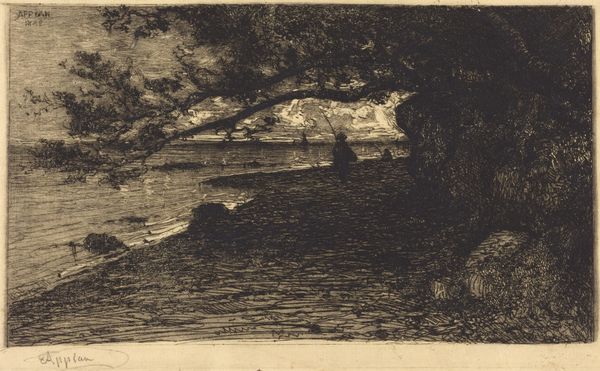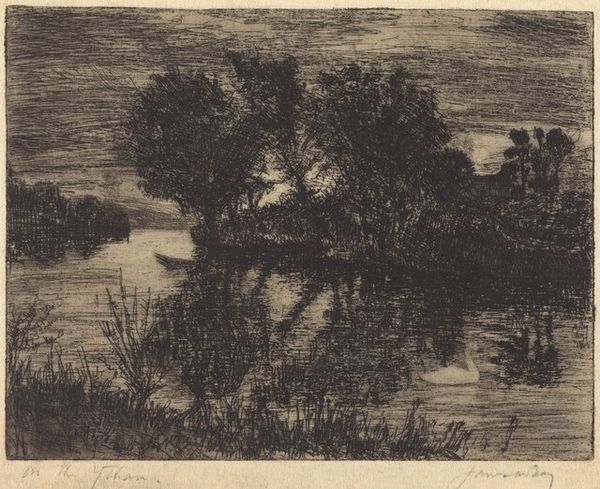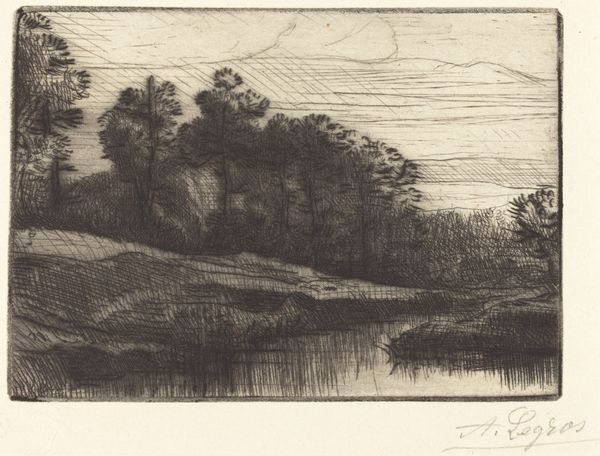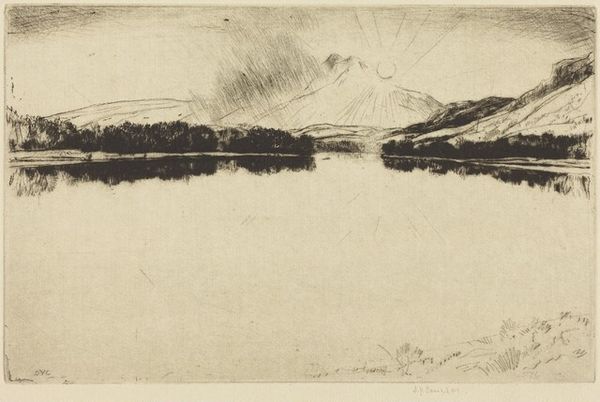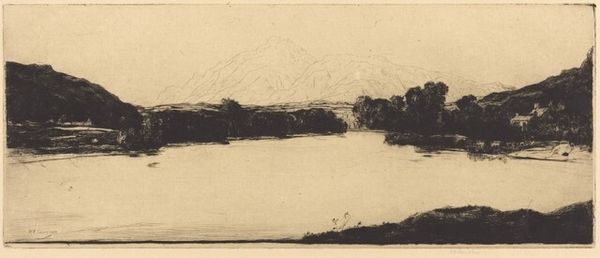
#
pencil drawn
#
amateur sketch
#
light pencil work
# print
#
pencil sketch
#
charcoal drawing
#
possibly oil pastel
#
charcoal art
#
pencil drawing
#
ink drawing experimentation
#
watercolor
Copyright: National Gallery of Art: CC0 1.0
Editor: Here we have David Young Cameron’s print, "Still Waters," created in 1906. The muted tones and soft lines create a sense of quiet reflection, almost melancholic. How do you interpret this work? Curator: I see "Still Waters" as a powerful commentary on the human relationship with nature at the turn of the century, a period defined by rapid industrialization and its environmental and social consequences. Cameron presents us with an image of undisturbed nature. But I wonder, can we see it as a visual elegy, a lament for the landscapes lost or threatened? Considering that many artists of Cameron's era also documented urban landscapes, does the absence of industrial markers in "Still Waters" represent a form of resistance, or perhaps a longing for a simpler time? Editor: That's fascinating! I hadn't considered it as a form of resistance. The "simpler time" reading is how I originally saw it, but now I wonder if there's more to it than just pastoral nostalgia. Curator: Exactly. And thinking about Cameron’s choice of printmaking, a medium historically associated with wider accessibility, we could consider whether “Still Waters” intended to reach a broader audience. Perhaps it served as a call for greater awareness of the value and fragility of these landscapes? What do you make of the composition itself? The balance between dark and light, for example. Editor: I see that now. The balance almost seems to suggest the delicate state of the ecosystem; everything relies on that subtle contrast. Thanks to your insights, it feels less like a pretty picture and more like a quiet protest. Curator: Indeed. And art like this reminds us of the vital role art plays in shaping dialogues about environmental consciousness and social responsibility.
Comments
No comments
Be the first to comment and join the conversation on the ultimate creative platform.

